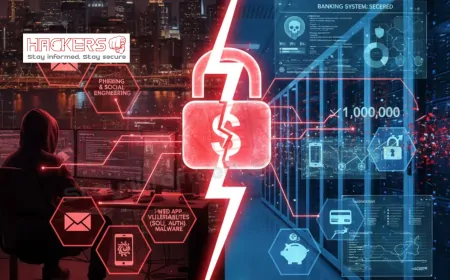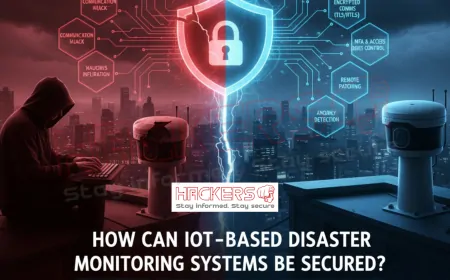How Do Phishing and Vishing Attacks Bypass Banking Security Systems?
Your phone buzzes with a message: "Urgent: Your bank account is locked. Click here to verify." Or you get a call from someone claiming to be from your bank: "We’ve detected fraud. Please share your OTP to secure your account." You hesitate, but the urgency feels real. You click. You speak. And just like that, your money is gone. This is not bad luck. This is phishing and vishing, two of the most common and dangerous cybercrimes targeting bank customers today. Even with strong passwords, two-factor authentication, and encrypted systems, these attacks work. Why? Because they don’t attack the bank’s technology. They attack you, the human behind the screen. In this blog, we’ll explain in simple terms how phishing and vishing bypass even the strongest banking security systems, how they evolve, and what you can do to stay safe. No technical degree required. Just awareness and caution.
Table of Contents
- Introduction
- What is Phishing?
- What is Vishing?
- How These Attacks Bypass Banking Security
- Real-World Examples of Phishing and Vishing in Banking
- How These Attacks Are Evolving in 2025
- How Banks and Customers Can Fight Back
- Conclusion
- Frequently Asked Questions
What is Phishing?
Phishing is a type of cyberattack where fraudsters pretend to be a trusted organization, like your bank, to trick you into giving away sensitive information. It usually happens through email, SMS, or fake websites. The word "phishing" comes from "fishing," because attackers cast a wide net, hoping someone bites.
A typical phishing message looks urgent: "Your account will be blocked in 24 hours. Log in now to verify." It includes a link to a fake login page that looks exactly like your bank’s website. When you enter your username, password, or OTP (One-Time Password), the attacker captures it instantly.
Phishing doesn’t need to hack the bank. It hacks your trust.
What is Vishing?
Vishing is voice phishing. It’s the same trick, but over the phone. The attacker calls you, often using a spoofed number that looks like your bank’s official contact. They sound professional, calm, and urgent.
Common vishing script: "This is Raj from XYZ Bank. We’ve blocked a suspicious transaction. To confirm it’s not fraud, please share the OTP we just sent you." You receive a real OTP because the attacker already tried a transaction. You read it aloud. And your account is emptied in seconds.
Vishing works because we trust voices more than text. It feels personal.
How These Attacks Bypass Banking Security
Banks invest millions in firewalls, encryption, and fraud detection. So how do phishing and vishing still work? Here are the main ways they slip through:
- They Target the Human, Not the System: Security tools stop hackers from breaking in. But if you willingly hand over your password or OTP, no firewall can help.
- Social Engineering: Attackers study psychology. They create fear, urgency, or greed. "Your money is at risk!" or "You’ve won a refund!" makes people act without thinking.
- Fake Websites and Apps: Phishing sites copy bank logos, colors, and URLs (like "hdfc-bank.co.in" instead of "hdfcbank.com"). Most users don’t notice the difference.
- Spoofed Caller IDs: Vishing uses technology to fake phone numbers. Your screen shows "SBI Customer Care," but it’s a scammer in another country.
- OTP Interception: Even with two-factor authentication, if you share the OTP, the attacker logs in as you. 2FA protects against stolen passwords, not stolen OTPs.
- Pretexting: Attackers create a false story. "We’re upgrading security. Please verify your details." It sounds official.
- AI-Generated Content: In 2025, AI writes perfect emails in your language with no grammar mistakes. It clones voices for vishing calls that sound exactly like a real bank officer.
- Bypassing Email Filters: Smart attackers use zero-day techniques or send messages via SMS, WhatsApp, or social media, where bank filters don’t reach.
The weakest link is not the code. It’s the person reading the message.
Real-World Examples of Phishing and Vishing in Banking
These attacks are not rare. Here are documented cases from recent years:
| Year | Attack Type | Method | Impact |
|---|---|---|---|
| 2021 | Phishing | Fake SBI SMS with link to malware app | ₹10 crore stolen from 5,000+ customers |
| 2022 | Vishing | Call spoofing as HDFC Bank, asking for OTP | ₹50 lakh lost in one week in Mumbai |
| 2023 | Phishing | WhatsApp message: "KYC update required" | Over 1,000 Axis Bank customers affected |
| 2024 | Vishing | AI voice clone of bank manager | ₹2 crore fraud in Delhi-NCR |
| 2025 | Phishing | UPI refund scam via fake QR code | Ongoing: Thousands targeted daily |
These cases show one thing: no bank is immune. The attack doesn’t need to breach the bank. It only needs to breach your caution.
How These Attacks Are Evolving in 2025
Phishing and vishing are not standing still. In 2025, attackers use advanced tools:
- AI-Written Messages: No spelling errors. Perfect grammar. Personalized with your name and account details scraped from data leaks.
- Deepfake Audio: Vishing calls use AI to clone real bank officers’ voices. You hear a familiar tone asking for your OTP.
- SMS from Compromised Phones: Attackers hack a real customer’s phone and send phishing texts to their contacts: "I’m in trouble. Send money via UPI."
- QR Code Scams: Fake QR codes in emails or posters. Scanning them installs malware or sends money to the attacker.
- Multi-Channel Attacks: You get an email, then a call, then an SMS. All from "your bank." It feels coordinated and real.
The goal? Overwhelm your doubts until you act.
How Banks and Customers Can Fight Back
Stopping phishing and vishing requires teamwork. Here’s what banks and customers must do:
For Banks:
- Send real-time alerts for every login or transaction
- Never ask for OTP, password, or CVV via call or message
- Use AI to detect and block fake websites
- Educate customers with in-app tips and SMS warnings
- Mark official communications with a verified badge
For Customers:
- Never click links in unsolicited messages. Type the bank URL manually.
- Never share OTPs. Banks will never ask for them.
- Verify calls by hanging up and calling the official number on the bank’s website.
- Use a password manager and enable 2FA
- Report suspicious messages to the bank and cybercrime.gov.in
Awareness is the best defense.
Conclusion
Phishing and vishing are not high-tech hacks. They are high-trust scams. They bypass banking security not by breaking code, but by breaking caution. With fake websites, spoofed calls, AI voices, and urgent lies, attackers turn customers into unwitting accomplices. In 2025, these attacks are smarter, faster, and more personal than ever. But knowledge is power. If you know the tricks, you won’t fall for them. Banks must warn, educate, and verify. Customers must pause, check, and report. Together, we can make phishing and vishing fail. Your money, your data, and your peace of mind are worth the extra second of doubt. Stay alert. Stay safe.
Frequently Asked Questions
What is the difference between phishing and vishing?
Phishing uses fake emails, SMS, or websites. Vishing uses phone calls with spoofed numbers and urgent scripts.
Why do banks never ask for OTPs?
OTPs are one-time use and meant only for you to authorize transactions. Sharing them gives full access to attackers.
Can 2FA stop phishing?
It helps, but if you share the OTP or use app-based 2FA on a hacked phone, attackers can still get in.
How do attackers know my bank and phone number?
From data breaches, public directories, social media, or buying leaked databases on the dark web.
Is it safe to click bank links in SMS?
No. Always open the official app or type the bank’s website URL yourself.
What should I do if I shared my OTP?
Call your bank immediately using the number on your card or website. Freeze your account and change passwords.
Can vishing calls be traced?
Sometimes, but spoofed numbers and international callers make it hard. Report to cyber police anyway.
Why do phishing sites look real?
Attackers copy bank designs, use similar domain names, and host on hacked servers to avoid detection.
Are UPI apps safe from phishing?
The apps are secure, toda but fake apps or QR codes can steal your credentials or money.
How can I verify a bank call?
Hang up. Call back using the official number on the bank’s website or your debit card.
Do banks send KYC update links?
No. Never click KYC links. Visit the branch or use the official app for updates.
Can AI stop all phishing?
No, but AI can flag suspicious messages and block fake domains quickly.
Is WhatsApp safer than SMS for bank alerts?
Official bank WhatsApp is secure if verified. But never respond to unknown numbers.
What is a QR code scam?
Fake QR codes in messages or posters. Scanning them can install malware or trigger payments.
Should I use the same password for banking and email?
Never. If email is hacked, attackers can reset your bank password.
Can children or elderly fall for vishing?
Yes, especially if they trust authority figures. Educate family members about these scams.
Do attackers target only rich people?
No. They target everyone. Even small accounts can be used for money laundering.
Is it safe to bank on public Wi-Fi?
No. Use mobile data or a VPN. Public Wi-Fi can let attackers see your activity.
Will phishing ever stop?
Not completely, but awareness, technology, and strict laws can reduce it greatly.
What is the future of anti-phishing tech?
AI voice detection, real-time URL scanning, and biometric logins will make attacks harder.
What's Your Reaction?























































